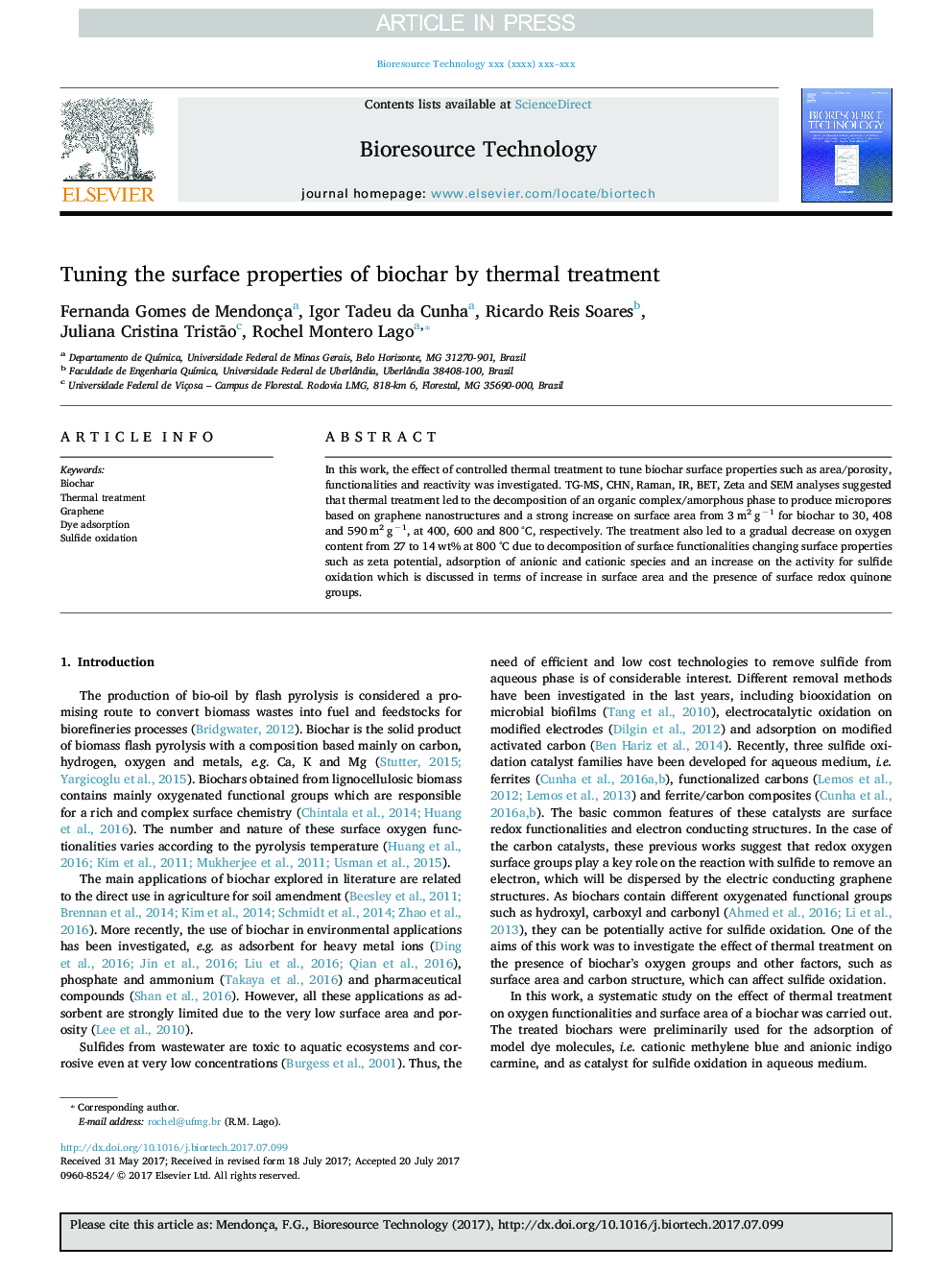| Article ID | Journal | Published Year | Pages | File Type |
|---|---|---|---|---|
| 7069264 | Bioresource Technology | 2017 | 6 Pages |
Abstract
In this work, the effect of controlled thermal treatment to tune biochar surface properties such as area/porosity, functionalities and reactivity was investigated. TG-MS, CHN, Raman, IR, BET, Zeta and SEM analyses suggested that thermal treatment led to the decomposition of an organic complex/amorphous phase to produce micropores based on graphene nanostructures and a strong increase on surface area from 3 m2 gâ1 for biochar to 30, 408 and 590 m2 gâ1, at 400, 600 and 800 °C, respectively. The treatment also led to a gradual decrease on oxygen content from 27 to 14 wt% at 800 °C due to decomposition of surface functionalities changing surface properties such as zeta potential, adsorption of anionic and cationic species and an increase on the activity for sulfide oxidation which is discussed in terms of increase in surface area and the presence of surface redox quinone groups.
Related Topics
Physical Sciences and Engineering
Chemical Engineering
Process Chemistry and Technology
Authors
Fernanda Gomes de Mendonça, Igor Tadeu da Cunha, Ricardo Reis Soares, Juliana Cristina Tristão, Rochel Montero Lago,
